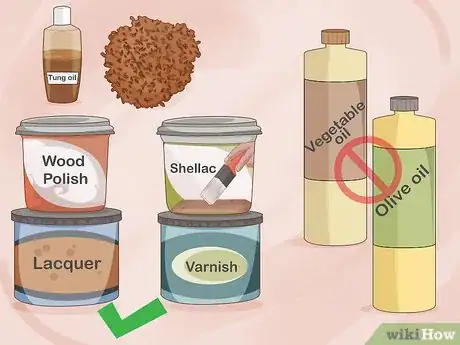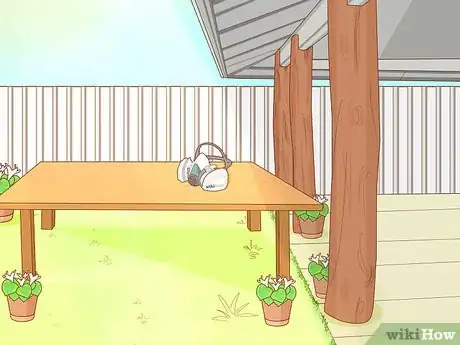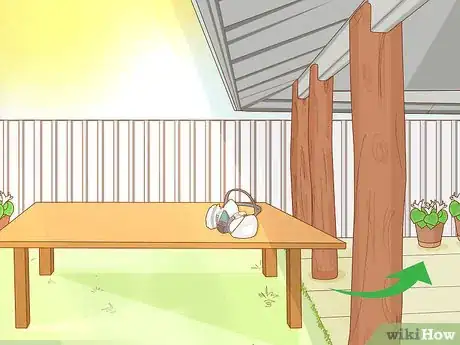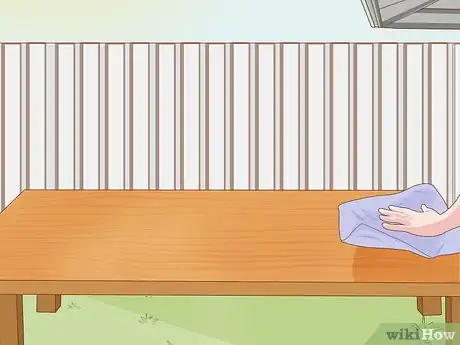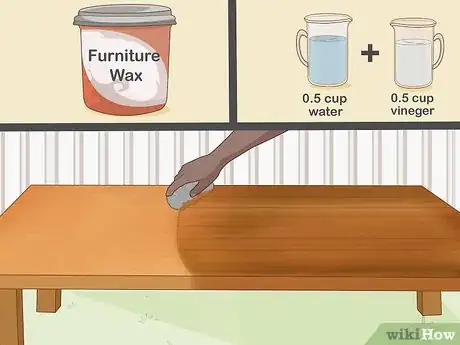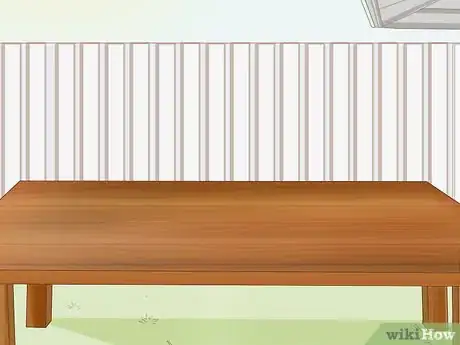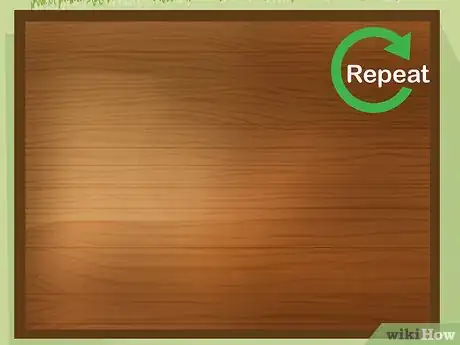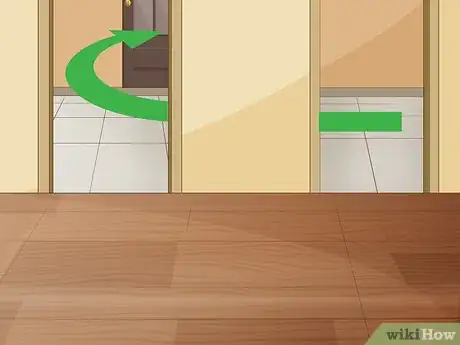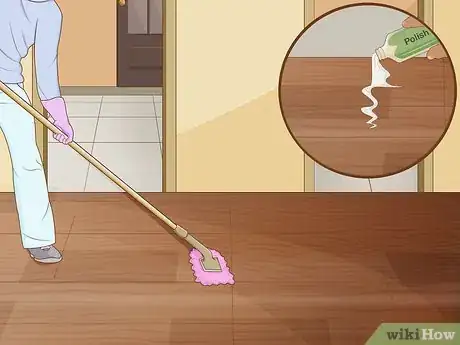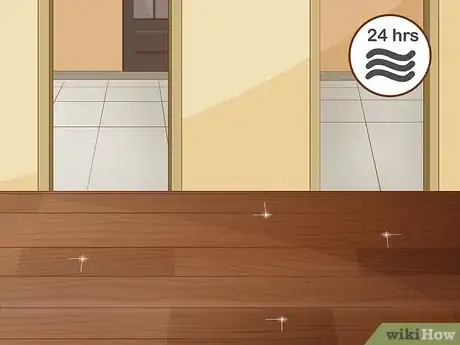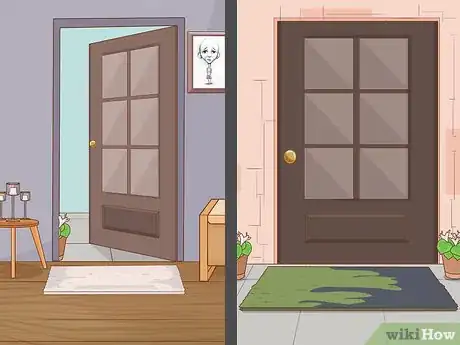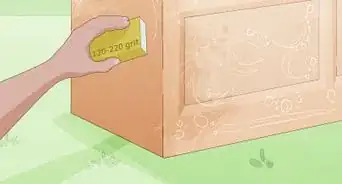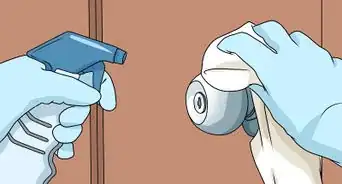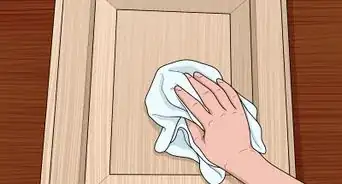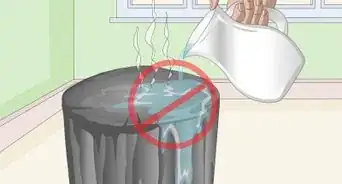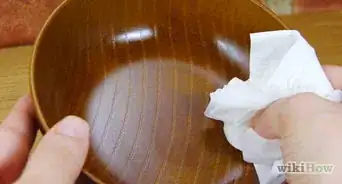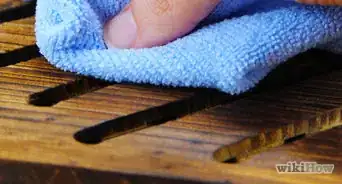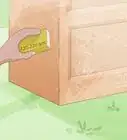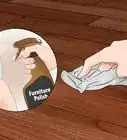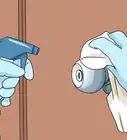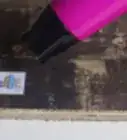This article was co-authored by Eduardo Peralta. Eduardo Peralta is a House Cleaning Specialist and the Manager of Best Maid House Cleaning based in San Jose, California. With over five years of experience, Eduardo and the Best Maid House Cleaning team specialize in home deep-cleaning, post-construction cleaning, and green and eco-friendly cleaning services. Best Maid House Cleaning is fully licensed and insured.
This article has been viewed 111,194 times.
Polishing wood is an easy DIY project that leaves woods moisturized and protected from the elements and regular wear. Raw wood accents look great, but using a lacquer, varnish, or an oil solution to polish your wood will enhance the natural colors and leave a beautiful finish. Whether you're looking to spruce up a piece of solid wood furniture, shine some hardwood floors, or add finish to some raw wood, polishing is a great way to add shine and longevity to any wood you have. No matter the size of your project, polishing wood is a fairly straightforward process that you can do by yourself!
Steps
Preparing to Polish
-
1Pick up a wood polish from a local store. If you are looking for a simple solution, pick up a furniture or floor polish from any big-box store. These polishes will be versatile and easy to use, so if all you’re looking for is a nice shine then these will get the job done. Be sure to purchase a formula made specifically for the project you're working on.
- If you are looking for something more advanced, look into using linseed or tung oil, shellac, varnishes, or lacquers. But be aware that varnishes, lacquers, and some mixtures of oils emit toxic fumes and will require extra safety precautions.
- For polishing laminate floors, purchase a product specifically formulated for this purpose. Other types of polish won’t adhere to the laminate.
- Do not use food oils as polish, such as olive or vegetable oil. These will spoil and develop a rancid smell over time.
- Only use wax over non-oil polishes, such as shellac or lacquer.[1]
-
2Work in a well-ventilated area. If you’re polishing a piece of furniture with a product that emits strong fumes, it is safest to work outside unless it is a sunny day and the product is also flammable. If you need to work inside or are polishing a hardwood floor, open all of the windows in the room or use fans to increase air circulation.
- Disposable and reusable ventilator masks are available at hardware stores that can protect you from any fumes you may encounter.[2]
Advertisement -
3Clear the area of any obstacles. If you are polishing furniture, move other furniture, decorations or plants away from the furniture you are polishing. If you are working on carpet, put down a tarp to prevent staining in case your polish spills. If you are polishing floors, remove all furniture from the room you wish to treat. This includes tables, chairs, beds- anything touching the floor. You won’t be able to treat the floors properly if there is anything obstructing your way.
- Be sure to make sure any animals or small children cannot enter your work area as you polish, especially if you are using a polish or solvent that emits fumes.[3]
-
4Clean the wood thoroughly before applying polish. If the surface isn’t clean before applying polish, any remaining dirt, grime, hair, or dust will be sealed in. You can use either a professional-grade wood cleaner or a mixture of hot water and dish soap to wipe down the furniture and floors. For furniture, briskly wipe down the surface with a damp microfiber cloth before drying with a dry microfiber cloth. For floors, sweep the area with a broom or wood-safe vacuum and then mop. For all types of wood projects, always work parallel to the grain of the wood whenever possible.
- Microfiber cloths are much softer than standard wash cloths and less likely to damage the wood.[4]
- It is important to dry the wood quickly as water can damage it. Also, the wood must be dry before applying the polish.
- You can also spray the entire area with a floor cleaning solution before mopping if the floor is particularly dirty.[5]
-
5Test your polish on an inconspicuous spot. The polish may have an unexpected effects on the wood so be sure to test it out first. Make sure to give it ample time to dry so you can be certain of its effects before moving forward. If you find that the polish doesn’t work the way you would like it to, feel free to try something different.
- This is a great way to see if your furniture or floors have a layer of laminate that will prevent the polish from sticking to the surface.[6]
Polishing Furniture
-
1Wipe down your furniture with the wax remover. Dampen your dry microfiber cloth with the wax remover and wipe along the grain of the wood. Wait until it is completely dry to ensure that you won’t damage the wood, then wipe off any excess dirt or wax with a dry microfiber cloth. Use 0000 steel wool to gently sand away any remaining marks or stains.
- It is important to remove any excess wax buildup before polishing as any remaining wax will degrade your polish.
- Test your wax remover on an inconspicuous area before covering the entire piece of furniture.
- You can purchase wax remover in any store, but you can also use a mixture of .5 cups (0.12 L) cups of water to .5 cups (0.12 L) of white vinegar if you would prefer a homemade option.[7]
-
2Apply thin layers of polish along the grain of the wood. Place a dry microfiber cloth on the open cap of polish and flip. This will allow the polish to absorb into the cloth without applying so much that it will begin pooling on the furniture. Rub the cloth along the grain of the wood to work in the polish.
- You can continue to apply layers depending on how dry the furniture is and the level of shine you would like to achieve.
- Make sure to get in all crevices and corners. Open cabinets or drawers to polish the joints and interior spaces.
- Be sure to test the polish in an inconspicuous area before covering the entire piece of furniture.[8]
-
3Repeat the polishing process as needed. Once complete, your furniture should be glossy and shiny, but you can continue adding layers to achieve the finish you want. You can repeat the polishing process on a routine basis to keep your furniture looking great, but unless you apply a new layer of wax you won’t need to use wax remover again.[9]
Polishing Finished Floors
-
1Plan the path you will walk through the room as you polish the floor. Without planning this out first, you could accidentally corner yourself far from a door and be forced to either walk over the wet polish or stay in place until it dries. It is best to begin in a back corner opposite a door and work across in rows.[10]
- Polish can stain baseboards and drywall, so be careful not to splash the walls. If you are concerned about this, place blue tape around the bottom of the baseboards as a protective measure.
-
2Rub the polish into the floor with a flat-surface mop. Pour a small amount of polish on the floor and begin working the polish into the wood with a back-and-forth motion parallel to the grain of the wood. It is best to start with less polish and slowly add more, as too much can cause the polish to puddle on the floor. Thinner layers will also dry more quickly and make it easier to apply a second coat.
-
3Wait 24 hours after your last coat before returning furniture to the room. Heavy furniture may scratch your freshly applied polish, so wait until the floors are completely dry before bringing any back in. If you would like a smoother finish, feel free to use a 100-grain sanding pole between layers. Clean the floors and wipe with a tack rug after sanding.[13]
- Do not sand the final layer. This will dull the finish of the polish.[14]
-
4Create good habits to maintain your polished floors. Place rugs at entryways to prevent tracking dirt, or ask guests and family to remove their shoes before entering the home. Place rugs near sinks to prevent water damage. Sweep and vacuum on a regular basis to prevent scratches.[15]
Community Q&A
Did you know you can get answers researched by wikiHow Staff?
Unlock staff-researched answers by supporting wikiHow
-
QuestionCan you polish wood with olive oil?
 wikiHow Staff EditorThis answer was written by one of our trained team of researchers who validated it for accuracy and comprehensiveness.
wikiHow Staff EditorThis answer was written by one of our trained team of researchers who validated it for accuracy and comprehensiveness.
Staff Answer wikiHow Staff EditorStaff Answer
wikiHow Staff EditorStaff Answer -
QuestionHow can I shine my wooden furniture at home?
 wikiHow Staff EditorThis answer was written by one of our trained team of researchers who validated it for accuracy and comprehensiveness.
wikiHow Staff EditorThis answer was written by one of our trained team of researchers who validated it for accuracy and comprehensiveness.
Staff Answer wikiHow Staff EditorStaff AnswerUsing either a commercial furniture polish or a homemade polish, spray the solution onto a soft cloth. Wipe it over the furniture, following the grain of the wood. Use a soft-bristle brush to help work the solution into any grooves on the furniture. Buff away the polish with a dry, soft, lint-free towel.
wikiHow Staff EditorStaff AnswerUsing either a commercial furniture polish or a homemade polish, spray the solution onto a soft cloth. Wipe it over the furniture, following the grain of the wood. Use a soft-bristle brush to help work the solution into any grooves on the furniture. Buff away the polish with a dry, soft, lint-free towel. -
QuestionWhat can I use instead of furniture polish?
 wikiHow Staff EditorThis answer was written by one of our trained team of researchers who validated it for accuracy and comprehensiveness.
wikiHow Staff EditorThis answer was written by one of our trained team of researchers who validated it for accuracy and comprehensiveness.
Staff Answer wikiHow Staff EditorStaff Answer
wikiHow Staff EditorStaff Answer
Things You’ll Need
- Furniture or wood polish
- A wax-remover if your furniture has been waxed in the past
- A medium-sized bowl
- Dish soap and water
- 0000 steel wool
- 5 microfiber rags
- Tarp
- Flat-surface mop for floor polishing
- Broom or floor-safe vacuum for floors
- Mop and bucket for floors
References
- ↑ https://www.finewoodworking.com/2004/11/01/selecting-a-finish
- ↑ https://www.apartmenttherapy.com/step-by-step-basics-how-to-polish-wood-furniture-173882
- ↑ https://www.apartmenttherapy.com/step-by-step-basics-how-to-polish-wood-furniture-173882
- ↑ https://www.homedit.com/furniture-cleaning/
- ↑ https://www.bobvila.com/articles/how-to-polish-wood-floors/
- ↑ https://www.bobvila.com/articles/how-to-polish-wood-floors/
- ↑ https://housewifehowtos.com/clean/remove-sticky-wax-buildup-furniture/
- ↑ https://www.apartmenttherapy.com/step-by-step-basics-how-to-polish-wood-furniture-173882
- ↑ https://www.homedit.com/furniture-cleaning/
- ↑ https://www.bobvila.com/articles/how-to-polish-wood-floors/
- ↑ https://www.bobvila.com/articles/how-to-polish-wood-floors/
- ↑ https://www.thisoldhouse.com/how-to/refinishing-school
- ↑ https://www.bobvila.com/articles/how-to-polish-wood-floors/
- ↑ https://www.thisoldhouse.com/how-to/refinishing-school
- ↑ https://www.bobvila.com/articles/how-to-polish-wood-floors/
About This Article
To polish wood, start by cleaning it with a wood cleaner or hot soapy water to get rid of any dirt and debris. Then, dry the surface with a microfiber cloth, since leftover moisture could damage the wood. When your surface is dry, test your polish on a corner to make sure it doesn’t damage your wood. If the polish dries and your wood looks fine, wipe your surface with wax remover. Once you’ve gotten rid of the wax, apply a thin layer of polish to the whole surface with a microfiber cloth. Wipe along the wood’s grain to keep the polish consistent. If you want your wood to be shinier, keep adding thin layers until you’re happy with how it looks. For more tips, including how to quickly polish a wooden floor, read on!
